Do not fret if you see your Orchid flowers falling off prematurely after the season’s first bloom. It could be a natural occurrence!
Scroll down to identify the causes and the ways to save your Orchids from losing their flowers.
Table of Contents Show
Why Do Orchids Suddenly Drop Their Flowers?
Orchids bloom for the first time in 3-8 years after reaching maturity, followed by 5-6 months of dormancy.
However, Orchids drop their flowers after concluding their 6-10 weeks of blooming spans. The hasty bloom drop trick preserves energy for the winter and helps the plant to rebloom.
If the flowers fall off naturally, they look brown and wilted but fully open with unfurled petals.

Moreover, the Orchids start losing their flowers in late August or early September and don’t bloom until late February or early to mid-March.
Additionally, if the flowers fall off your Orchid naturally during fall or winter, they will bloom again in the next season.
The falling off due to such a mistake occurs due to irregular care and environmental upshots.
The natural bloom drop is followed by a yellow to brown stem in Orchids, a way to discard old growth and welcome new foliage.
Why Are The Flowers Falling Off My Orchid?
If daily care requirements become unsatisfactory, it may curb the flowering cycle of Orchids.
So, let’s go through some of these problems while shedding light on immediate solutions for each.
1. Insufficient Light
Like tropical plants, Orchids require at least 5-6 hours of bright indirect sunlight daily for flowering.
If direct light falls on the plant for long, the buds dry up before blooming and drop off from the plant.

However, there are three types of light requirement range for different varieties of Orchids, ranging from low to high.
- Low light – Orchids demand 2 hours of diffused sunlight daily.
- Medium-light – Orchids favor 4 hours of diffused sunlight daily.
- High light – Orchids need 6 hours of diffused sunlight daily.
Understanding the light requirement for each Orchid species is difficult.
So, before bringing an Orchid plant home, ask your dealer about the light requirements.
How to stop flowers from falling off Orchids?
- Locate the plant in an east-facing window for dappling sunlight.
- Keep the plant near a curtained south-facing window during winter.
- Use broad-spectrum grow lights for light-demanding Orchids.
- Employ a UV protection film to filter direct light.
Do You Know?
Orchids drop their flower buds before opening, known as a “bud blast,” which happens if your plant is severely stressed.
2. Fluctuating Temperature & Humidity
The ideal temperature for Orchids is between 65-85ºF, with humidity around 40-70%.
Also, they enjoy a nighttime temperature as low as 21ºF but not for long.
However, the temperature and humidity requirement might vary depending on your variety.
For example, Moth Orchids, Dendrochilium, and Ludisia prefer a temperature range between 65-85ºF, while Cattleya and Cymbidiums prefer 50-80ºF temperatures.
How to stop flowers from falling off Orchids?
- Keep your Orchids away from fireplaces and air conditioning vents.
- Sustain humidity levels by keeping the plant in greenhouses or indoors.
- Employ frost blankets to cover up outdoor orchids in winter.
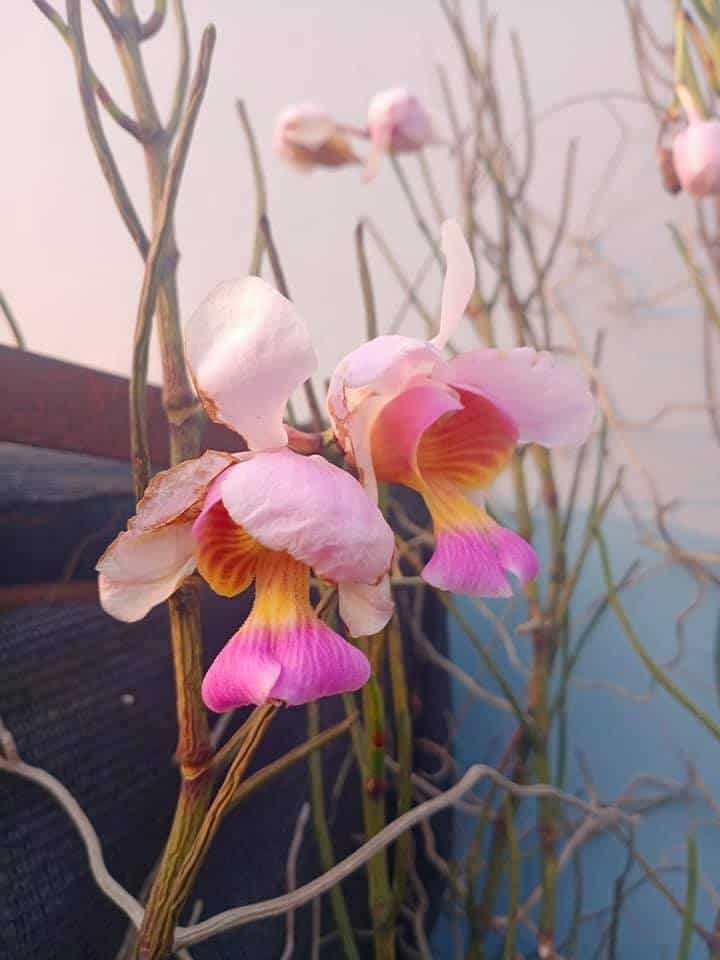
- Use hygrometers with thermometers to monitor the humidity and temperature at all times.
- Invest in heating pads in winter to keep Orchids warm but avoid it if it is in a clay or terracotta pot.
- Utilize pebble trays or group the plants during heat bouts to stabilize the humidity.
3. Drought Stress
Underwatering is another issue for Orchids as it creates difficulties during the flowering cycle.
This problem occurs in Orchids due to the mindset that tropical plants require less water.
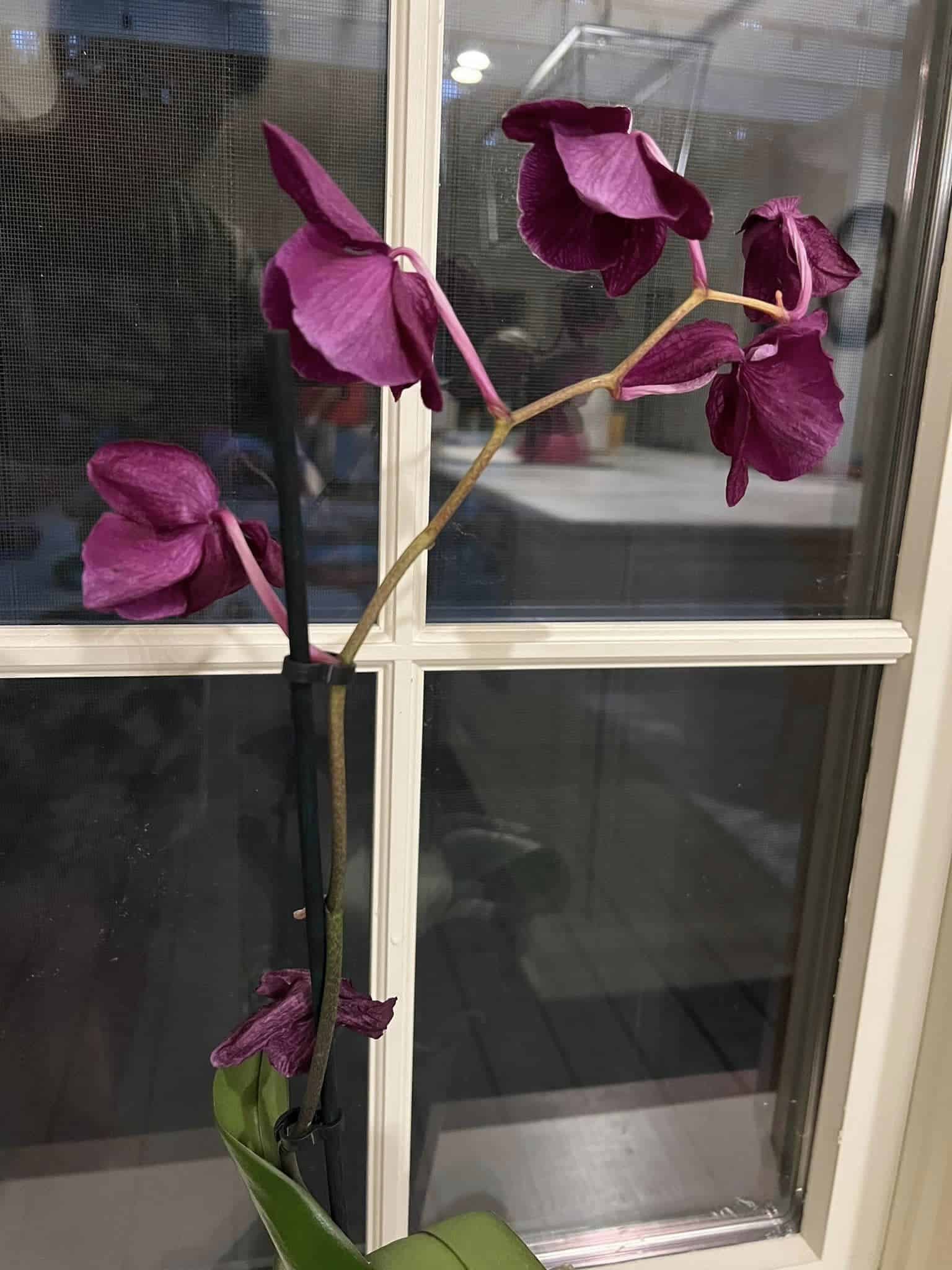
When watering sessions are ignored, blooms on Orchids drop under stress to preserve the moisture.
Orchid stems may also turn yellow-brown after all the flowers fall off if the plant lacks water.
How to stop flowers from falling off Orchids?
- Water your plants immediately if the flowers are wilting.
- Relocate your plant to a shady place so the potting mix stays damp.
- Pick up the plant pot and feel for its weight. If it seems lighter than usual, give it a few sips.
- For calculative watering, place 3 cubes on the topsoil of the pot.
- Employ a moisture meter to check the moisture of the potting mix. A 3-4 reading suggests that your plant is thirsty.
4. Overwatering Condition
Soggy soil, black or brown spots on leaves, rotting roots, droopy plants, and dropping blooms are evident if your Orchid is suffering from overwatering.
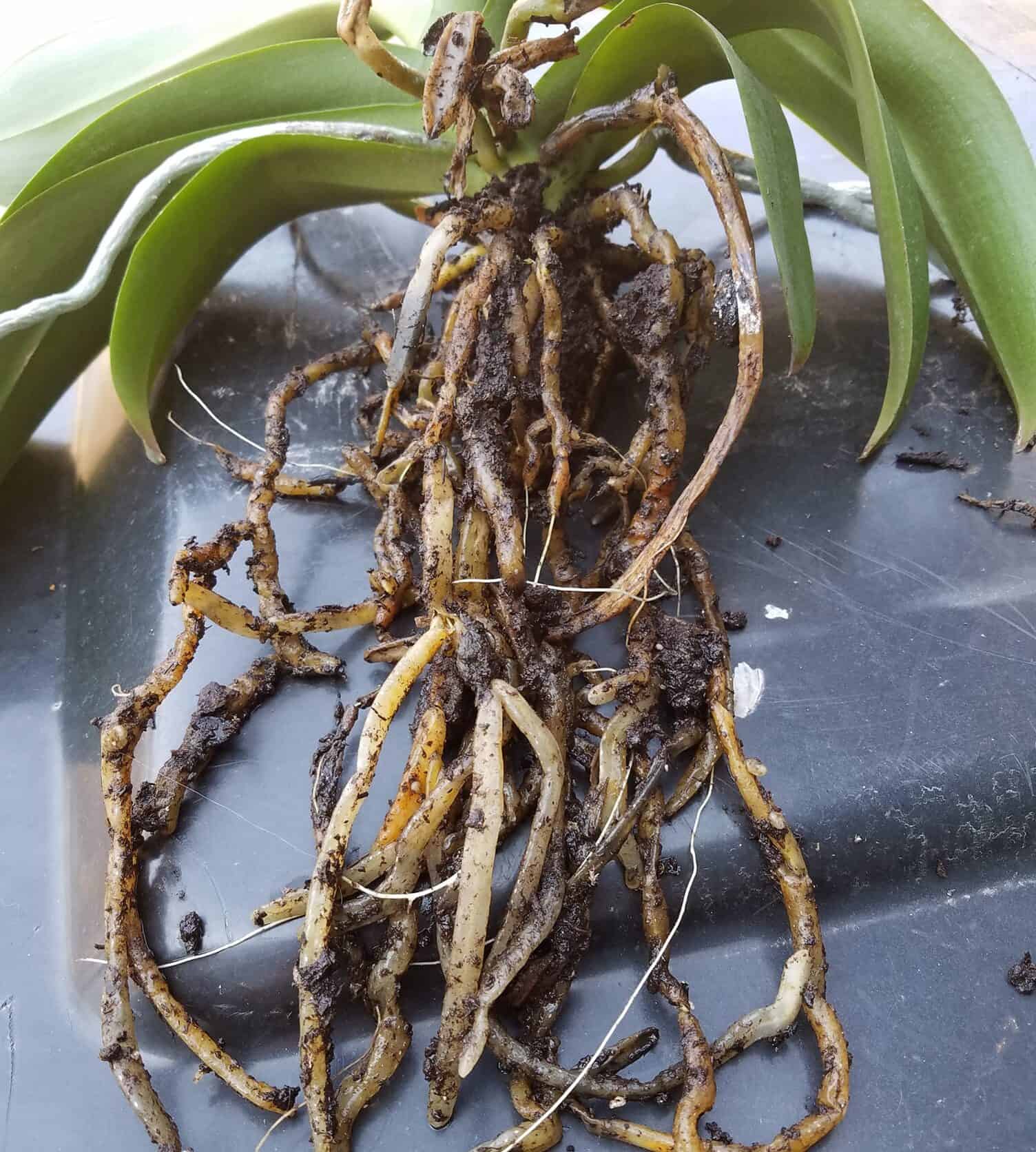
So, the flowers fall, which can also happen with buds.
Before concluding, check the Orchid leaves as it turns yellow, lose their green shine, and become limp if overwatered. At this point, your plant is beyond revival.
How to stop flowers from falling off Orchids?
- If you notice signs of root rot, snip it off using a sterilized pruner.
- Also, remove the yellow leaves to reduce the stress.
- Amend the soil with aerating components such as sand or organic perlite.
- If the soil smells foul or fishy, change it with a fresh Orchid mix.
- Avoid watering for a few weeks and start your first watering when the top inch of the soil is dry.
- Unclog the drainage holes in containers weekly or during each repot.
- If you fear overwatering, take the bottom-up approach to water your Orchid.
5. Transplant Shock
Orchids will suffer from shock if the timing of repotting goes awry, along with any change in the conditions.
Generally, Orchids need repotting every 1-2 years during the fall after flowering or during the active season.
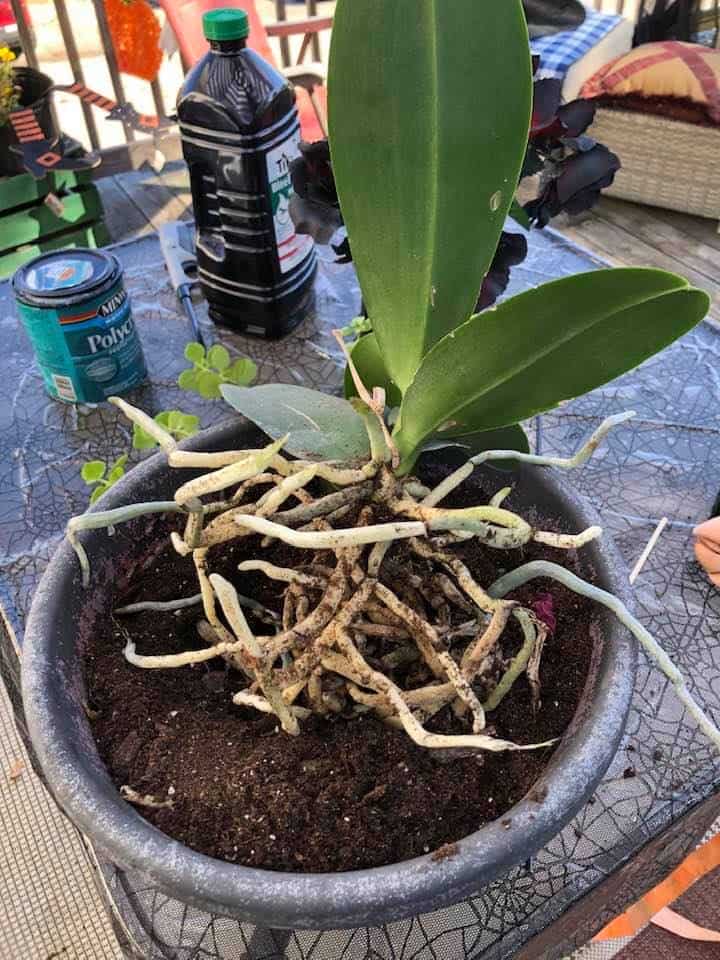
Hence, your Orchid may skip its meals, causing the flowers to fall off and hamper their appeal.
How to stop flowers from falling off Orchids?
- Place the repotted plant in low light for at least 3-4 weeks before placing it in bright indirect sunlight.
- Always change the potting mix during each repot.
- Avoid repotting your Orchid when it is dormant in winter.
- Keep misting the leaves daily for 2 weeks after repotting in the daytime or morning.
- While misting, offer 2-3 drops of phosphorous-based fertilizer to the water weekly, starting from the second week of repotting.
Should You Cut the Orchid After Flowers Fall Off?
If your Orchid is losing its flowers due to a stressful situation, try to revive them by cutting off their flowering stem.
After all the flowers fall off from Orchids, the flowering stem dies off, turning from green to yellow and then brown. If these signs are noticeable, cut the stem right at the base.
But, if the flowering stem is brown, your Orchid plant is not dead. In fact, it indicates that the plant just finished its blooming phase and will rebloom again in the next season.
Moreover, due to lack of watering, humidity, light, and temperature, Orchid buds dry up before blooming.
Do You Know?
If the stem turns yellow and flowers fall off afterward, it suggests anomalies in the day-to-day care of the plant.
But if the flowers turn brown, shrivel up, and then fall off from the stem, it signifies that the plant is normally completing its flowering phase. The stem turns yellow and brown later.
How to Cut Orchid Stems After Flowers Fall Off?
You can cut off the spent spike to prepare your Orchid for producing more vigorous blooms for the next season.
- Choose the spike you want to remove, as different spikes need a different approach for pruning.
- Remove the green spikes by cutting an inch above the node below the lowest bloom.
- Then, cut the brown or yellow spike by snipping it all the way to the plant’s base.
- If there are 2 spikes in a plant, prune off one spike at the base of the plant.
- Meanwhile, cut the second spike at an inch above the node below the nethermost flower.
- Collect all the spent spikes in a bucket and burn or compost them.
Take reference from the video to get an insight into the process!
How to Prevent the Orchid Flowers from Falling Off?
Usually, it may take around 5-6 months for your Orchid to bear flowers again after dormancy.
However, it depends on how you nurse the plant, as it all comes down to the primary care requirements.
- Provide your Orchid plant with daily filtered sunlight of 2-6 hours.
- Prepare a well-draining and moisture-retaining potting blend using pine bark, sphagnum moss, organic perlite, coco fiber, etc.
- Keep pH levels between 5.5 and 6 using lime extract or citric acid.
- Always keep the humidity level high (40-70%).
Pro Tip!
Trick your Orchid to bloom early after pruning. Keep it in a room set at 10°C lower than its usual temperature requirement at night, straight for 3-4 weeks.
- Aim for a balanced blend of NPK 20-20-20 every month during growing seasons.
- You can also ply for the same blend but with half the strength and apply it weekly.
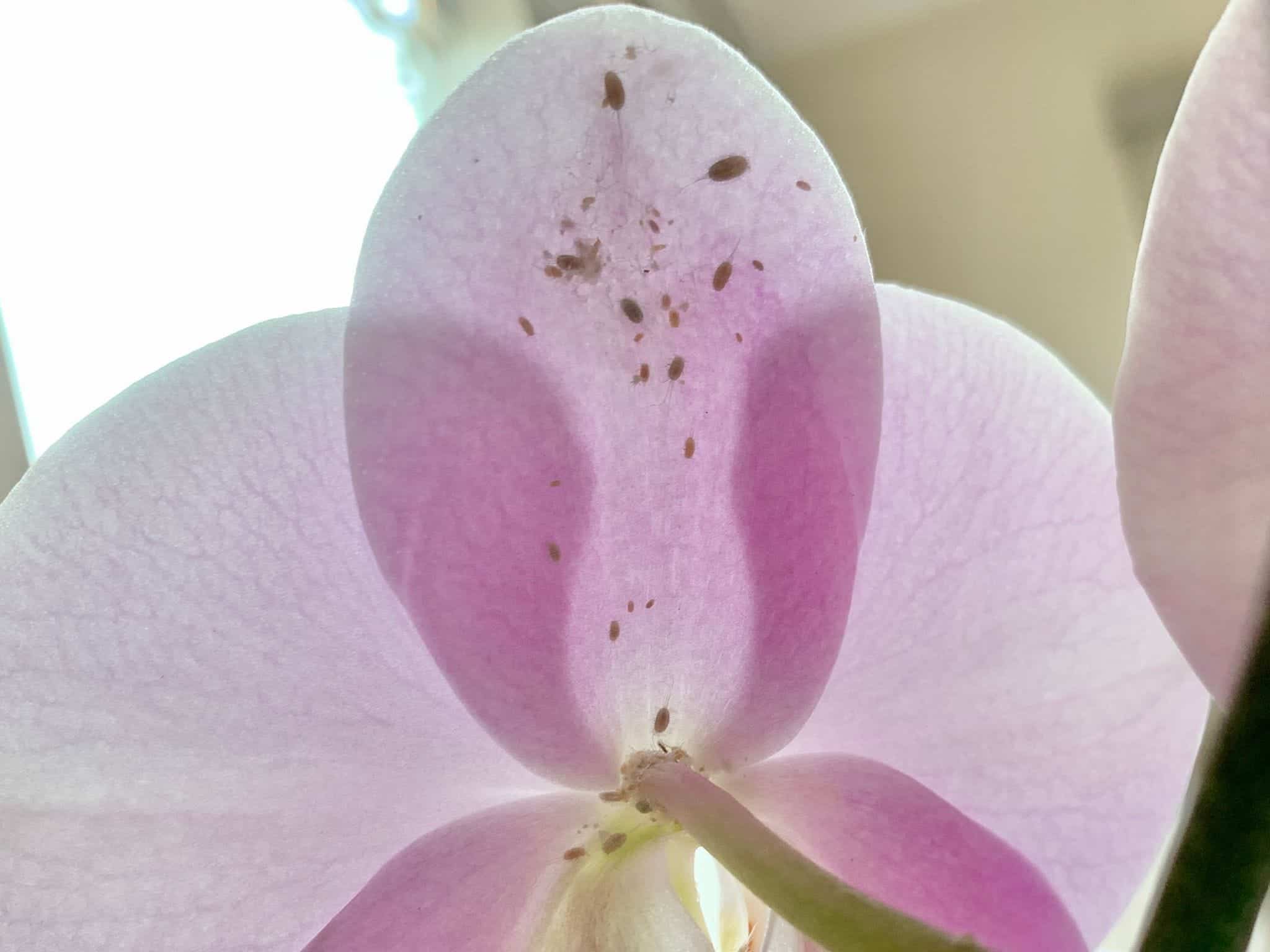
- Cater Orchids with nitrogen feed monthly during winter.
- Repot Orchids every 1-2 years when the roots protrude from the drainage holes.
- Aim for a pot 1-2 inches larger than the previous container while repotting.
- Use neem oil to remove pests or disease infections every 28 days.
- For repotted plants, spray every 14 days until its growth.
From Editorial Team
Conclusion!
The asymmetrical flowers are the most appealing part of Orchids, bringing the grower a sense of joy and relief.
So if the falling off of Orchid flowers starts, immediately safeguard it by maintaining the light, temperature, and water routine. But do check if it is a natural process or not.


